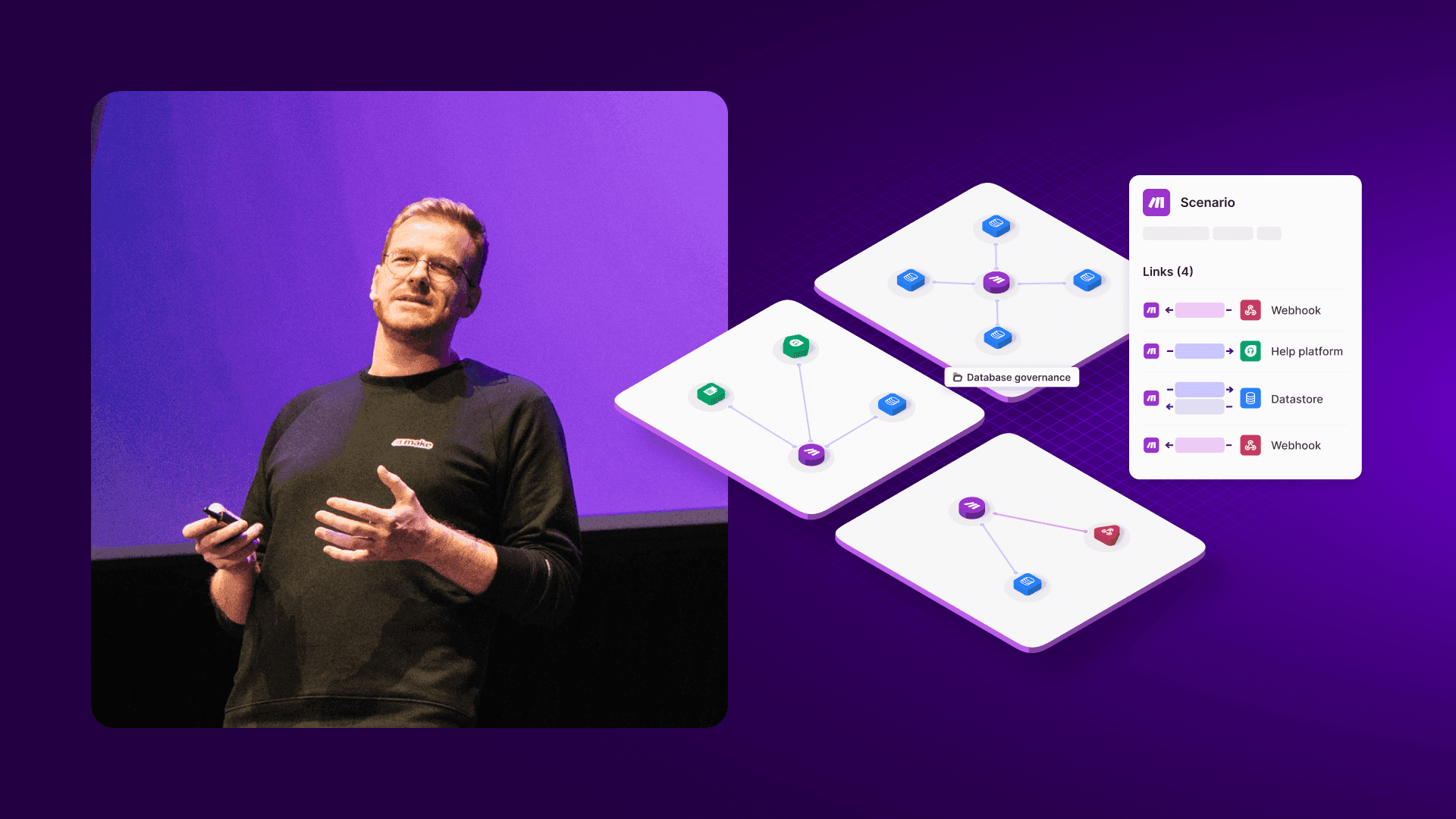Sep 25, 2025 | 4 minutes
Stop automating like it’s 2015: What you need to know before kicking off AI transformation
Darin Patterson, VP of Market Strategy at Make, and Andreas Stryz, CTO and co-founder of FINN, reflect on what it really takes for companies to adopt AI in meaningful ways.

If you take a flawed process and throw AI at it, don’t you just end up with a flawed process that runs faster? This is a worry for many organizations right now. We’re in a moment where every business feels pressure to ‘do something’ with AI, but speed without proper strategy can leave the companies worse off than before.
Make’s VP of Market Strategy, Darin Patterson, recently caught up with Andreas Stryz, CTO and co-founder of FINN, a Munich-based car subscription company, to talk about what it really looks like to embrace AI at scale.
Here are some of the highlights.
The art of the possibility
As we all know, it’s always wise to start by identifying business problems, not by identifying technological solutions. But it can be too easy to get distracted by the latest model or platform and lose sight of the real challenges you’re trying to solve.
The difficulty, though, is that many business stakeholders don’t know what’s possible with AI. They don’t even know what’s possible with traditional automation.
Andreas’s solution at FINN is to run business hackathons where employees bring their own problems into the room and experiment with AI tools to solve them. By doing this, they remove fear, spark curiosity, and reveal practical solutions and opportunities that weren’t obvious before.
Balancing fear and risk
When considering adopting AI, leaders who worry about data use, privacy, or compliance often hesitate. Those concerns are real – but Andreas shared an important reframing of this.
In his view, the bigger risk is missing innovation altogether. In his experience, C-level support for AI is stronger than with past technology waves, and executives are pushing for adoption. That top-down momentum is powerful, especially if companies can channel it into real outcomes.
Building AI transformation into company culture
Hackathons are a useful springboard for doing more with AI, but they can’t stand alone. Too often, teams spend a day experimenting but then return to business as usual.
At FINN, the team went further. They appointed business automation managers, gave them responsibility for driving AI initiatives, and built updates into company-wide meetings.
By being transparent about what they knew and what they didn’t, they turned AI into a shared learning journey across the organization.
3 traits of adaptive companies
As Darin shared, companies that successfully adopt new technologies like AI tend to share three traits:
They embrace experimentation without requiring huge business cases up front.
They normalize failure and talk about it openly.
They value progress in small steps, rather than chasing perfection.
When these traits are embedded in the culture, AI becomes another tool that helps the business adapt, rather than an intimidating disruption.
Agents and the future of work
There’s plenty of debate right now about what an AI agent is – at Make, we’ve followed this closely, especially since our launch of AI Agents earlier this year. Andreas takes a practical view. He defines AI agents as simply “roles” – a customer care agent, a software engineering agent, a sourcing agent. He even tracks the human-to-agent ratio much like companies measure manager-to-employee ratios.
So far, FINN has seen the biggest wins with agents in software engineering and HR sourcing. Customer care is proving trickier – at least for now.
How to stop automating like it’s 2015
Despite all the progress, Darin shared that he still meets companies that approach automation as if nothing has changed since 2015. They see it purely as an efficiency play.
Andreas’ advice is direct: start now. Don’t wait for a perfect strategy. Equip everyone (not just engineers) with tools and let them experiment.
Looking ahead
Embracing AI isn’t just about the latest tools or models – it’s about culture, people, and trust. The businesses that embrace adoption with this mindset will be the ones that succeed.




